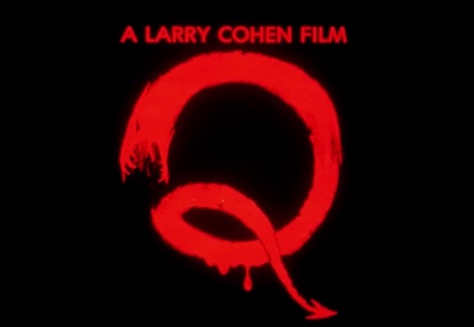
•As advertised, the outstanding element of this movie is Michael Moriarty’s performance, a never-ending bundle of tics and tone changes, like he’s playing an insane adult toddler (one of the highlights of the whole movie is the one-on-one between him and Carradine in the diner, where you get Moriarty demanding to get a picture with Rupert Murdoch, but also being casually racist because he’s pissy about how Richard Roundtree’s cop character manhandles him.) It’s a uniquely bonkers thing to see, you genuinely never know in what direction he’s going – the point of this character is that he gets involved with stuff way over his head and never seems sure how to react, except when he sees it directly benefiting him, but Moriarty takes that way further than that, making someone who is pathetic and unhinged and it’s not clear if he knows it or not. Most movies of this type wish they had an anchor as entertaining as him.
•Meanwhile, David Carradine barely seems to take the movie he’s in seriously at all (he probably didn’t), and his reactions are often as subdued as Moriarty’s are exaggerated. This kind of works for his own role, though – the whole god/monster complex this movie is working through needs him to be sort of the ultimate agnostic, someone who’s interested in seeing whether this supposed god is the real deal, primarily by filling it full of bullets. The ritual killings subplot doesn’t really connect to the main story that strongly, but it’s such a weird idea and gives the story a whole other layer to deal with. So just because he seems kind of laid back considering all the people being decapitated and/or having their skin flayed, he’s still invested in his own way.

•There’s lots of aerial shots of New York (obviously), and those and a lot of the street scenes really give off a lovably scuzzy vibe for the city throughout this movie – all crowded streets and dilapidation and people being jerks (really enhances the legitimacy of the scenes of raining blood and people getting being decapitated by a flying lizard.) I’m unfortunately not boned up on my NYC history, but this feels like a specific snapshot of the city at the time, all the more interesting because it’s one of several monster movies set there (for homework, compare and contrast between this, Kong ’76, and Ghostbusters.)
•The stop-motion effects for the monster are fine, but Harryhausen they are not – though, there’s a likeable quality to how chintzy they can be. The monster itself looks cool and is animated well, and the obvious dolls used when it throws people off of buildings feels almost like a throwback to the original King Kong – they also don’t show us the whole thing enough (though it is all during the day, bucking the usual sfx shortcuts) for it to be distracting, spending most of the movie in brief cuts. I do love the way they animated the thing’s shadow – it’s certainly not realistic, but man is it stylish.

•The best moment aside from Moriarty’s Murdoch lines are when the mime is revealed to be an undercover cop.
•After a certain point Q seems to stop eating people and starts instead tossing them off buildings, which seems like not very good survival tactics?
•Speaking of homages to King Kong, of course the movie ends with the bullet-riddled beast falling to its death off a building (according to the director, the whole movie was partially an attempt to give the Chrysler Building its own monster.) This follows closely behind the first remake of King Kong, and in a way rebukes it – that movie was more violent than the original but still posits Kong as the victim without any subtlety, and this movie is EVEN more violent and has no sympathy for the monster whatsoever! Despite the fact that it was clearly just an animal trying to survive and care for its young, it doesn’t belong so it needs to die. Good thing it’s not a god, just a monster – what kind of god has babies?

